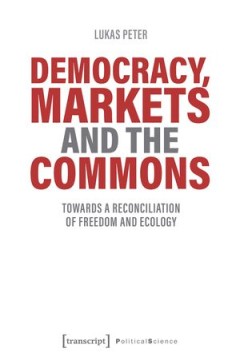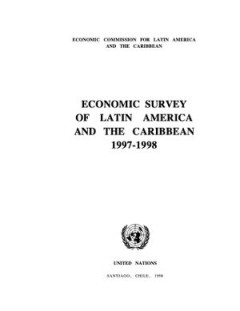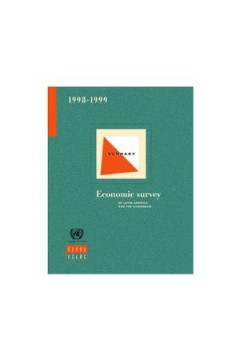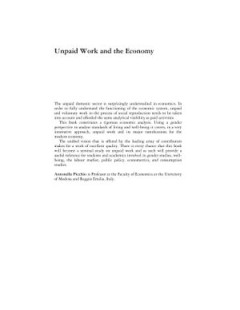Filter by

Working Misunderstandings
Misunderstandings are often perceived as something to be avoided yet delineate an integrative part of everyday work. This book addresses the role that misunderstandings play in collaborative work and, above all, their effects on the organisational result. As exemplified by project collaboration across three offices of a multinational corporation in India, Frauke Mörike explores how misundersta…
- Edition
- -
- ISBN/ISSN
- 9783839458679
- Collation
- -
- Series Title
- -
- Call Number
- 650

Democracy, Markets and the Commons : Towards a Reconciliation of Freedom and …
How can we overcome the existing political, economic, and ecological crises that humanity faces? With the notion of the commons, Lukas Peter argues that this form of social organization can provide answers to the shortcomings of centralized states and open and competitive markets. By building on and going beyond the work of Elinor and Vincent Ostrom, he develops an ecological understanding of t…
- Edition
- -
- ISBN/ISSN
- 9783839454244
- Collation
- -
- Series Title
- -
- Call Number
- 650

Tourism and Travel during the Cold War: Negotiating Tourist Experiences acros…
The Iron Curtain was not an impenetrable divide, and contacts between East and West took place regularly and on various levels throughout the Cold War. This book explores how the European tourist industry transcended the ideological fault lines and the communist states attracted an ever-increasing number of Western tourists. Based on extensive original research, it examines the ramifications of…
- Edition
- -
- ISBN/ISSN
- -
- Collation
- -
- Series Title
- -
- Call Number
- 338.4 TOU t

Cult Places and Cultural Change in Republican Italy
This scholarly study throws a new light on the Roman impact on religious structures in Republican Italy. In the last four centuries BC, Italy went through immense changes. The Apennine and Adriatic areas were originally inhabited by various 'Italic' tribes and characterised by a specific non-urban societal organisation, in which cult places had a pivotal function. From the fourth century BC onw…
- Edition
- -
- ISBN/ISSN
- 9789089641779
- Collation
- -
- Series Title
- -
- Call Number
- -

Economic Survey of Latin America and the Caribbean 1997-1998
The Economic Survey of Latin America and the Caribbean, 1997-1998 is the fiftieth edition in this series. To mark this milestone, a special chapter has been included in this edition which traces the history of the publication and outlines the way in which the economic situation in the region has been viewed during each of the periods examined. Once again, the Survey has been published as a sing…
- Edition
- -
- ISBN/ISSN
- -
- Collation
- -
- Series Title
- -
- Call Number
- 650

Economic Survey of Latin America and the Caribbean 1997-1998
The Economic Survey of Latin America and the Caribbean, 1997-1998 is the fiftieth edition in this series. To mark this milestone, a special chapter has been included in this edition which traces the history of the publication and outlines the way in which the economic situation in the region has been viewed during each of the periods examined. Once again, the Survey has been published as a sing…
- Edition
- -
- ISBN/ISSN
- 9789210582971
- Collation
- -
- Series Title
- -
- Call Number
- 650

Economic Survey of Latin America and The Caribbean 1998-1999
This summary provides an assessment of the Latin America and the Caribbean region's economy during 1998 and the first half of 1999. It presents an overview of each country's external sector, macroeconomic policy, activity levels, inflation, employment, saving and investment. The publication contains thirteen statistical tables
- Edition
- -
- ISBN/ISSN
- -
- Collation
- -
- Series Title
- -
- Call Number
- 650

Aesthetics of Gentrification Seductive Spaces and Exclusive Communities in t…
Gentrification is reshaping cities worldwide, resulting in seductive spaces and exclusive communities that aspire to innovation, creativity, sustainability, and technological sophistication. Gentrification is also contributing to growing social-spatial division and urban inequality and precarity. In a time of escalating housing crisis, unaffordable cities, and racial tension, scholars speak of …
- Edition
- -
- ISBN/ISSN
- -
- Collation
- -
- Series Title
- -
- Call Number
- -

Contesting the Foreshore
This collection of essays is about tourism and social, political, and economic relations in coastal locations in various parts of the world. The starting point of each chapter is the ethnographic study of one particular place. However, the authors are also concerned with wider regional, national, and global forces which shape and influence the local economies and societies under review. Althoug…
- Edition
- -
- ISBN/ISSN
- -
- Collation
- -
- Series Title
- -
- Call Number
- -

Unpaid Work and the Economy
In economics, the voluntary sector is surprisingly understudied. In order to fully understand economics, unpaid and voluntary work needs to be taken into account and afforded the same status as paid activities. This book constitutes a rigorous economic analysis with special emphasis on gender issues and covers every conceivable angle of unpaid work and all its ramifications for the modern econo…
- Edition
- -
- ISBN/ISSN
- -
- Collation
- -
- Series Title
- -
- Call Number
- -
 Computer Science, Information & General Works
Computer Science, Information & General Works  Philosophy & Psychology
Philosophy & Psychology  Religion
Religion  Social Sciences
Social Sciences  Language
Language  Pure Science
Pure Science  Applied Sciences
Applied Sciences  Art & Recreation
Art & Recreation  Literature
Literature  History & Geography
History & Geography